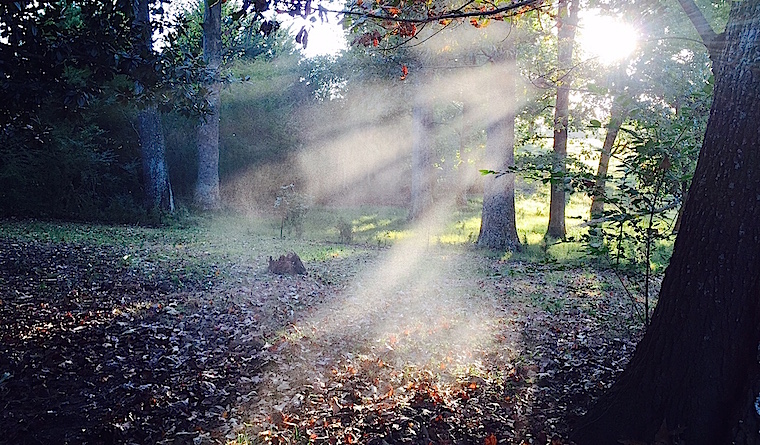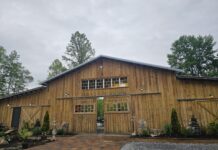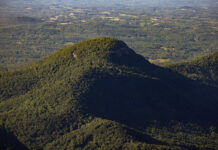
When we think of fall color we typically think of tourism and fall festivals. If you’re the type that thinks fall leaves = work, keep the next few tips in mind. Leaves are a valuable source of organic matter for our streams and soils. Aquatic insects depend on leaf matter as the base of their food chain in our local streams. When mulched and utilized properly, leaves can also be an ideal source of free organic matter.
With that said, I hope everyone resists the temptation to rake them up to burn them. Burning leaves wastes the resource, and it can also be a significant stressor on tree roots. Keep in mind tree roots extend about twice the size of the canopy. In most yards it’s hard to find a spot to burn leaves where a tree won’t be harmed in some manner. The damage may not be seen immediately, but over time it can take a toll on larger trees. Even worse than burning the leaves is bagging them for transport to the landfill. Landfill space is far too pricey to fill with something that could be helping us.
At my house I use a mulching mower to put my leaves to work in the garden. I have a small mower with a bagger, so it’s easy to get out and mow the leaves into small pieces where they’re less likely to blow. It’s also easy to take the filled bag to critical areas in my landscape for use. Good places to use them are around trees and shrubs for mulch, in and around areas prone to washing or weeds, or in a garden plot where you need to build up the soil structure.
Mulching leaves is best done when they’re dry, so I look for an afternoon mowing, when we haven’t had any rain for a few days. It’s also important to keep the leaves off your grass, because leaves can tend to smother out the grass, especially when you have young seedlings. It only takes a few days for young fescue seedlings to smother, so I tend to try to mow mine at least once a week, or after a big storm. If you don’t have a bagger on your mower you could rake the leaves into a wind row, so they’re easy to mow and collect. Sometimes it’s also easy to mow in a pattern where they accumulate in a small pile or windrow.
When mulching plants in the fall keep in mind it’s best to mulch out to the edge of the drip line of the tree or shrub. Three to four inches of mulch spread evenly across the root zone of the plants does much to help protect them from the extreme temperatures of winter and summer. Mulch also helps maintain moisture for plant roots, and as it breaks down, it can provide nutrients for the plants as well. Stay away from the temptation to mound the mulch up near the trunk. This provides insect pests and pine voles easy access to your plants. Pine voles can be such a nuisance, that in some key plants it’s best not to mulch at all.
We’ve had several folks come in with apple, peach, hosta or bulb plantings that were heavily affected by voles. With cooler temperatures on the way, trapping should become more effective for folks having problems with pine voles.
For more information about mulching, composting, and other topics check out our website at www.ugaextension.com/habersham.
 ABOUT THE AUTHOR
ABOUT THE AUTHOR
Steven Patrick is the UGA Extension Agent for the Northeast District. His office is located in Habersham County.






